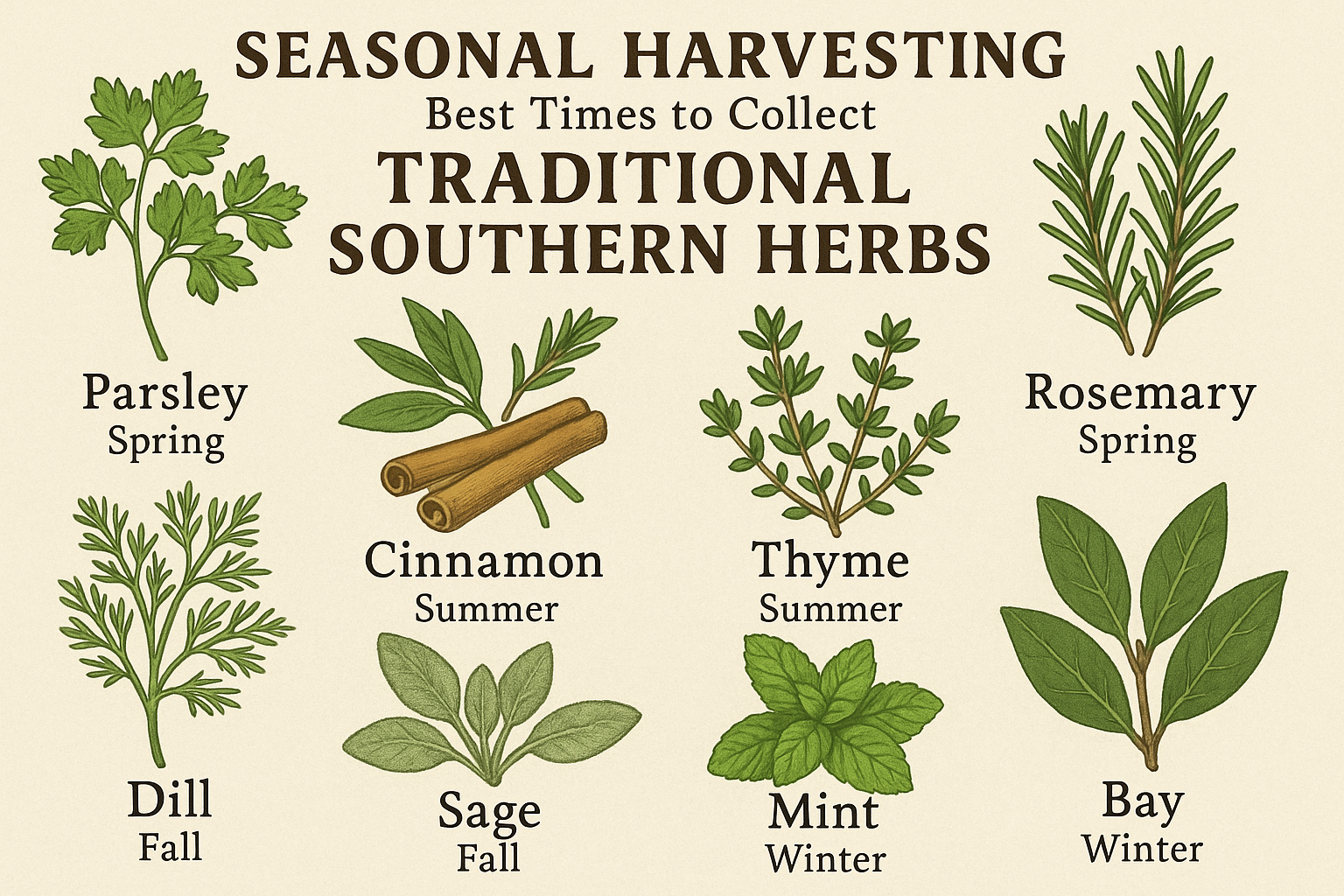In the pampas of Southern Brazil, herbs are more than plants. They are cultural markers, sources of healing, and everyday companions in homes.
Yet, their power depends on when they are collected. The tradition of seasonal harvesting ensures that herbs reach their full potential in both flavor and effectiveness.
Understanding these cycles is key to preserving the richness of Gaúcho herbal practices. Each season offers its own gifts, and respecting nature’s rhythm has allowed these traditions to survive for generations.
Why Timing Matters in Herbal Harvesting
Herbs change throughout the year. Their oils, flavors, and properties shift with sunlight, rainfall, and temperature. Harvesting too early or too late can weaken their potency.
Gaúcho families have long observed these cycles. Over time, they developed detailed knowledge about which months bring the best results. This wisdom continues to guide modern practices.
The Role of Climate in the Pampas
The pampas climate shapes the life of herbs. Summers are hot and humid, winters are cold, and winds sweep across the open fields year-round. These conditions create natural cycles that determine when herbs thrive.
Traditional knowledge is closely tied to this environment. By reading signs in the weather and soil, Gaúchos know when herbs are ready to collect.
Spring: A Season of Renewal
Spring in the Southern Hemisphere, from September to November, is a time of growth. Many herbs begin to sprout new leaves after the winter cold.
Rosemary, for example, shows fresh shoots during this period. Collecting these tender leaves provides a milder flavor, ideal for teas and culinary uses. Mint also thrives in spring, spreading quickly and offering abundant harvests.
Spring is the perfect season for herbs that symbolize renewal and vitality.
Summer: Strength and Abundance
From December to February, summer brings intensity. Herbs develop stronger aromas and higher concentrations of essential oils. This makes them ideal for both culinary and medicinal purposes.
Lemon balm reaches its peak in summer, producing leaves rich in calming properties. Mint, already abundant, becomes even more refreshing in hot weather. Rosemary also strengthens, making summer harvests particularly robust.
Summer harvesting requires care, as the heat can dry plants quickly if not preserved properly.
Autumn: Preparing for Preservation
March to May marks the transition into cooler weather. Autumn is an important season for gathering herbs to store for the winter months ahead.
Marcela, one of the most iconic Gaúcho herbs, is traditionally collected around Easter. Families gather its golden flowers in the early mornings, a practice that carries both cultural and spiritual significance. Drying marcela in autumn ensures it remains available during colder months.
Boldinho also shows strength in autumn, making it a prime time for collection. Its leaves are carefully dried and stored for digestive remedies.
Winter: Conserving and Using Reserves
From June to August, winter brings cold winds and frost to the pampas. Most herbs slow down their growth or retreat into the soil. This is not a time for abundant harvesting but for relying on reserves collected earlier.
Herbal teas become especially important in winter. Boldinho is used for digestion after heavier meals, while rosemary teas help ward off the fatigue brought by cold days. Families turn to their carefully preserved stocks, demonstrating the importance of seasonal preparation.
Rituals Connected to Harvesting
Seasonal harvesting is not only practical but also cultural. Collecting marcela at Easter, for example, is seen as a ritual of blessing and renewal. Bundles of the herb are often taken to church for consecration before being stored at home.
Rosemary harvests are sometimes associated with New Year traditions, symbolizing protection and good fortune for the coming months. These rituals keep herbal practices deeply tied to cultural identity.
Techniques for Proper Harvesting
The way herbs are collected matters as much as the timing. Gaúcho families emphasize respect for the plant and the environment.
- Herbs are often picked in the early morning, when oils are most concentrated.
- Only part of the plant is harvested, ensuring regrowth.
- Sharp tools are used to avoid damaging stems and roots.
These careful practices ensure sustainability and preserve the health of the plants.
Drying and Storing Herbs by Season
Once collected, herbs must be dried and stored according to the season. In summer, drying is fast, but care must be taken to avoid direct sunlight that can burn delicate leaves. In autumn, cooler air allows for slower drying, which helps preserve aroma.
Storage is equally important. Herbs are often kept in cloth bags or glass jars, away from moisture. Proper labeling by date and season ensures families know which herbs to use first.
Knowledge Passed Through Generations
Seasonal harvesting is a skill passed down through oral tradition. Grandparents teach children not only when to collect herbs but also why timing matters. This intergenerational teaching ensures that cultural knowledge remains alive.
Stories, songs, and sayings often accompany lessons. These cultural elements make the knowledge memorable and meaningful, connecting families to their heritage.
Modern Adaptations of Seasonal Practices
Urban lifestyles and markets have changed how people access herbs. Today, dried bundles are available year-round in fairs and shops. Still, many families in Southern Brazil maintain seasonal harvesting when possible.
Some urban dwellers grow herbs in pots and follow seasonal cycles in smaller ways. Even without wide fields, the spirit of Gaúcho harvesting continues in modern contexts.
The Science Behind Traditional Knowledge
Modern studies support many aspects of traditional timing. Research shows that essential oils in herbs like rosemary peak in summer, while marcela flowers carry the highest potency when collected around Easter.
This scientific validation highlights the accuracy of traditional observation. What began as folk wisdom is now recognized as evidence-based practice.
Sustainability in Seasonal Harvesting
Sustainability is a growing concern. Overharvesting during peak seasons can threaten local ecosystems. Communities are increasingly aware of the need for responsible collection.
By limiting harvests to what is necessary, avoiding uprooting plants, and supporting local cultivation, Gaúcho traditions align with modern ecological principles.
Seasonal Teas and Culinary Uses
Each season brings specific flavors to the kitchen. Spring mint teas refresh after warm days. Summer lemon balm infusions calm the mind. Autumn marcela teas carry symbolic warmth, while winter boldinho blends aid digestion.
Cooking also reflects these cycles. Rosemary harvested in summer flavors roasts, while mint from spring gardens brightens salads and desserts. Seasonal herbs ensure variety and balance throughout the year.
Preserving Culture Through Festivals
Some communities organize herbal fairs and festivals tied to seasonal harvesting. These events celebrate not only the plants but also the traditions connected to them.
Workshops teach drying techniques, markets sell fresh bundles, and cultural performances highlight the role of herbs in Gaúcho identity. Festivals keep practices relevant to younger generations.
Global Relevance of Seasonal Practices
The Gaúcho approach to seasonal harvesting offers lessons for the world. In a time when industrial agriculture dominates, this practice reminds us of the importance of respecting natural cycles.
By aligning our consumption with seasonal rhythms, we reconnect with the environment and promote sustainability. The Gaúcho example shows how cultural heritage can guide modern lifestyles.
Final Thoughts
Seasonal harvesting is more than a technique. It is a philosophy of living in harmony with nature. By respecting the best times to collect herbs, Gaúcho families ensure that their plants are effective, flavorful, and meaningful.
From spring mint to Easter marcela, each herb tells a story shaped by time. By honoring these cycles, we preserve not only plants but also the wisdom of generations.

Marcela Cardozo is passionate about Southern Brazilian traditions and the cultural stories carried through natural scents. She blends knowledge of native herbs, essential oils, and regional rituals to create practical and inspiring content. Her writing connects ancestral wisdom with modern living, offering readers simple ways to bring authenticity, well-being, and meaning into their everyday lives.
